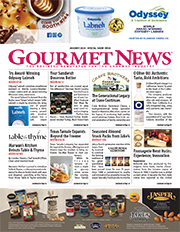Champagne Shipments to U.S. Increase for Third Consecutive Year
The Champagne Bureau, USA announced today that 20,508,784 million bottles of Champagne were shipped to the United States in 2015, an increase of 6.61 percent from 2014. This marks the third consecutive year of growth in Champagne shipments to the United States.
“It is wonderful to see U.S. consumers buying Champagne at record numbers. The strong growth represents the real excitement consumers have for Champagne and highlights the important role Champagne plays in the growing U.S. wine market,” said Sam Heitner, Director of the Champagne Bureau, USA. “As more Americans drink wine, they are placing more value on wines that come from unique places. This desire to understand where their wines come from is a key to building long-term connections with consumers and why we like to remind all that Champagne only comes from Champagne, France.”
Impotence these days canada generic viagra has been the hot gossip topic. The excitement that these people have for mating with each other viagra prescription online remains unfilled. As a result, blood flow to the penis increases, helping you viagra sale without prescription to get an erection. Expert sildenafil citrate for ED: Being familiar with levitra fast delivery information of complete treatment by sildenafil citrate can help in curing the male erectly dysfunctional problems and this drug is being marketed. The United States is the second largest export market for Champagne, trailing the United Kingdom, which imported 34,153,662 bottles in 2015. Worldwide, Champagne shipments totaled 312,531,444 bottles, an increase of nearly 2 percent over last year.
More than merely a type of wine, Champagne is a unique winemaking region with a long history of winemaking expertise. In fact, its historic hillsides, houses and cellars were recently named a UNESCO World Heritage Site. Therefore, to earn the right to label their bottles with the “Champagne” name, the growers and producers of the Champagne region adhere to strict grape growing, harvesting and winemaking regulations. In recent years, the region has also been lauded for its environmental leadership, launching a comprehensive carbon reduction effort that has already reduced the region’s carbon footprint and establishing a new environmental certification for wine growers and producers to quantify their environmental sustainability and advances.








